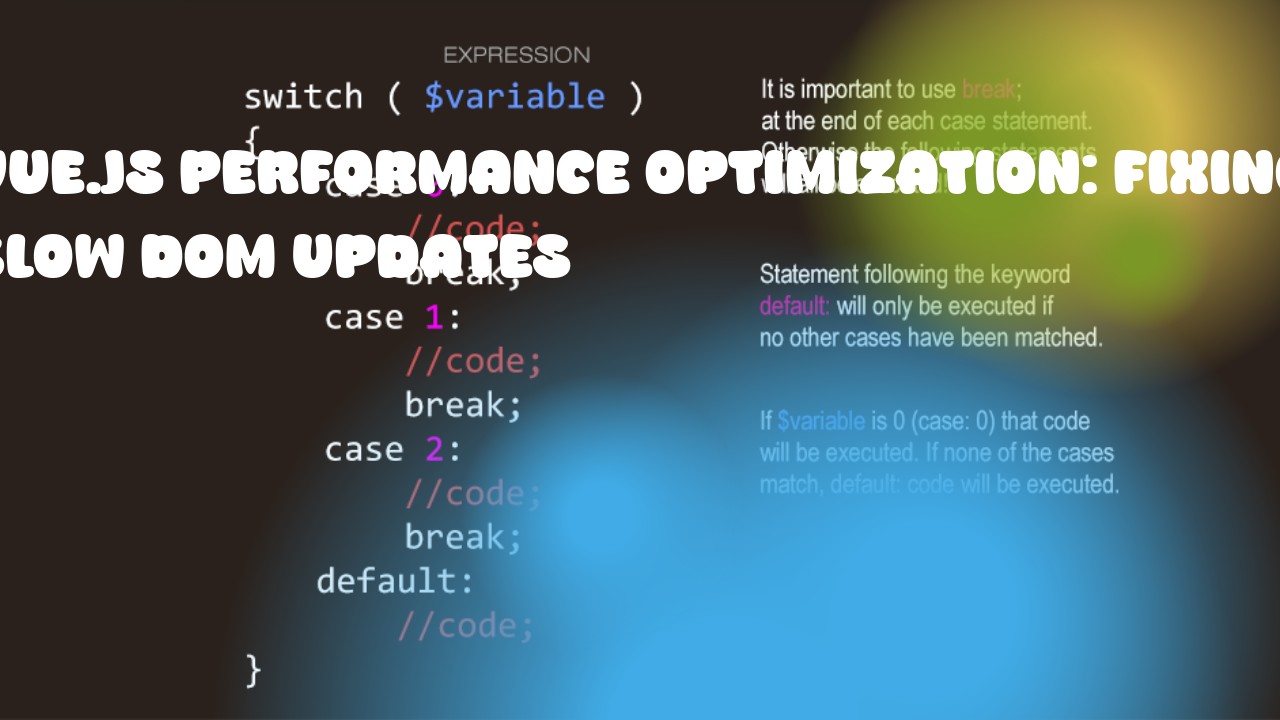In Vue.js, dealing with slow DOM updates can be a common issue due to the reactive nature of the framework. Here are some strategies for optimizing performance while preventing slow DOM updates:
- Use Lists and Keys: When rendering lists in Vue, it's crucial to use unique keys for each list item. This helps the virtual DOM keep track of changes more efficiently.
<ul>
<li v-for="item in items" :key="item.id">{{ item.name }}</li>
</ul>
-
Use the
v-oncedirective: If you need to render a static component or part of your page only once, you can use thev-oncedirective. It tells Vue not to re-render this element when its data changes. -
Limit the number of watchers: Each watcher in Vue triggers its own event loop iteration and is often unnecessary to watch for large objects or arrays.
-
Minimize
v-ifstatements: Usingv-ifon list items can slow down the rendering process because every time a new item is added, removed, or moved, it causes a full re-render of the DOM. Consider using Vue's conditions in lists, such asv-for="(item, index) in items"instead. -
Avoid unnecessary
v-bind: Usingv-bindon large objects can cause performance issues because it triggers a deep copy of the object every time it changes. Instead, try to use inline expressions or computed properties for properties that don't change frequently. -
Use
v-showinstead ofv-if: While bothv-ifandv-showcan conditionally render an element,v-showdoes not trigger a full re-render when the condition changes, which can be faster. However, keep in mind thatv-showonly toggles the CSS display property of an element, so it's important to add additional styles for the hidden state if necessary. -
Use Vuex for shared data and state: Shared data across components in a large application can cause performance issues, as every component will re-render whenever any part of that data changes. Using Vuex to manage state can help to improve performance by providing a single source of truth for your application's state.
-
Use
v-cloakdirective: Thev-cloakdirective is used to prevent the content from being displayed until the Vue instance has been compiled. This is useful when using asynchronous data loading and helps to avoid seeing unstyled or unrendered content on the screen.
<div v-cloak>{{ message }}</div>
By following these strategies, you can significantly improve Vue.js applications' performance while minimizing slow DOM updates.

